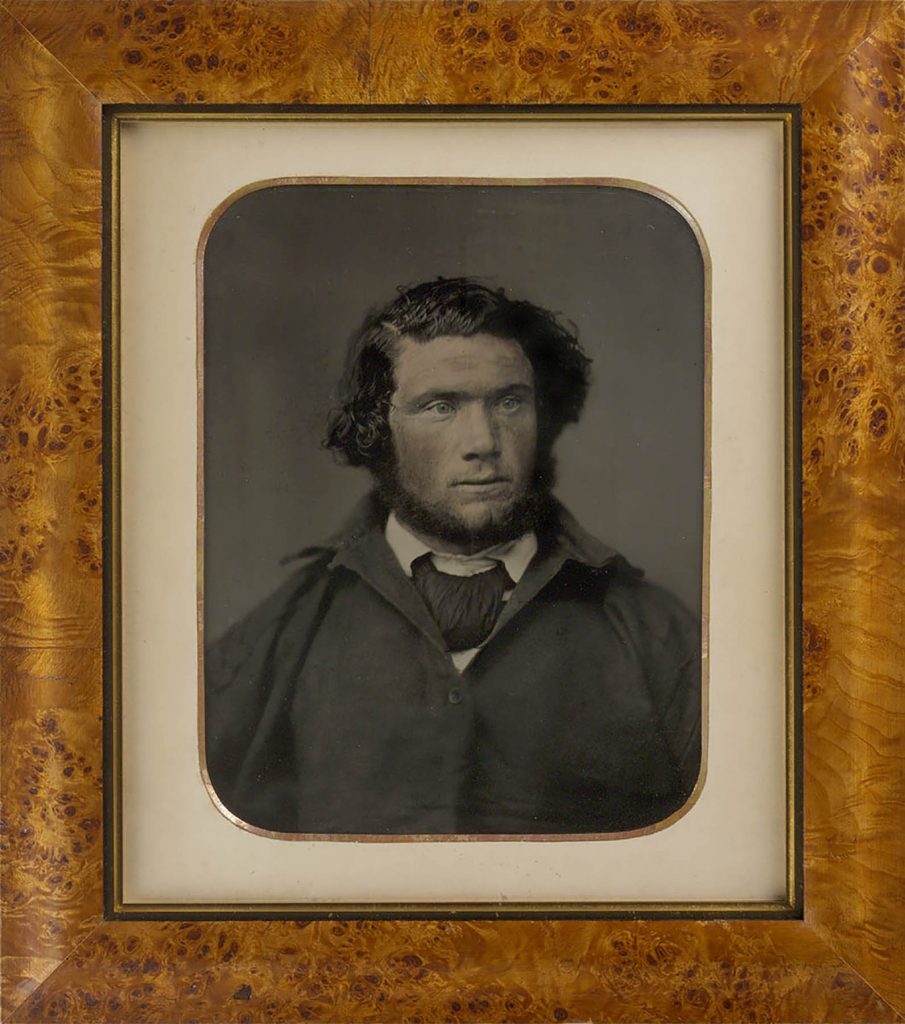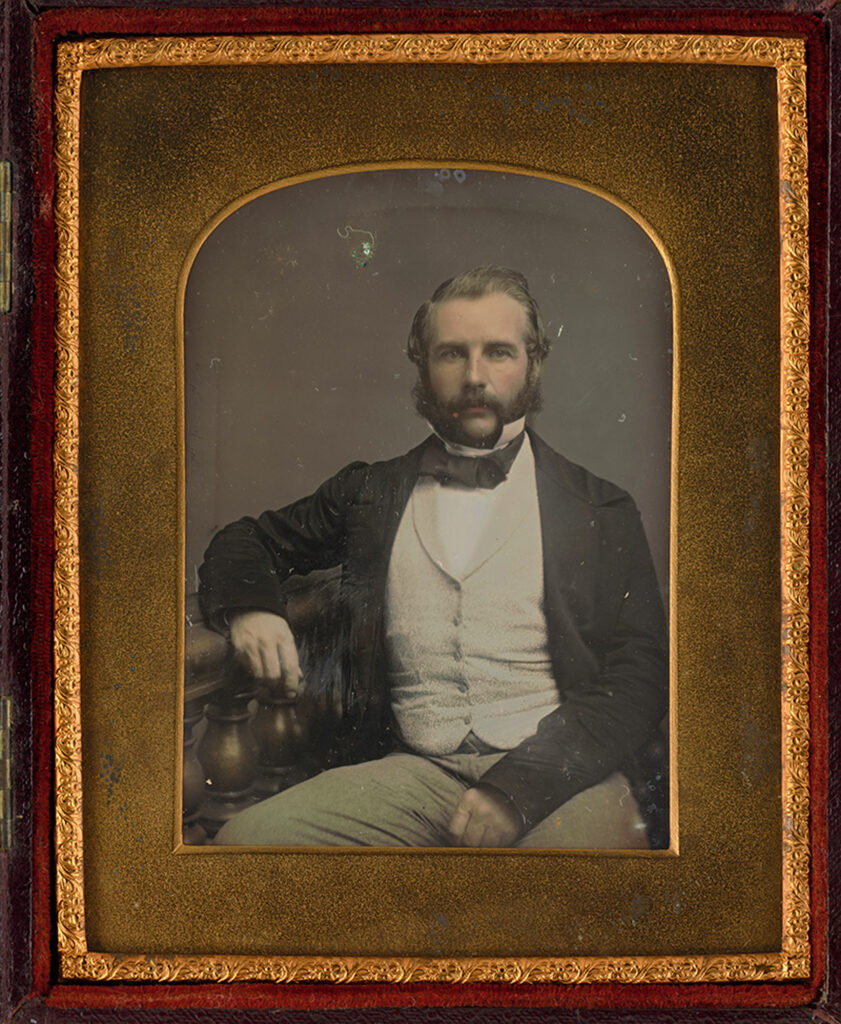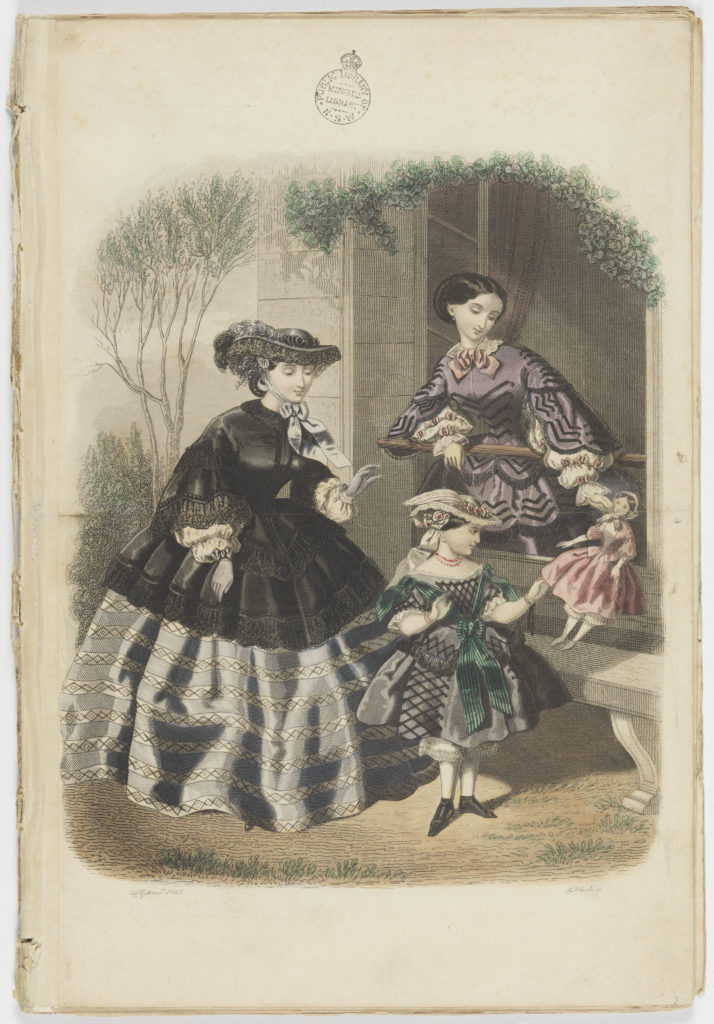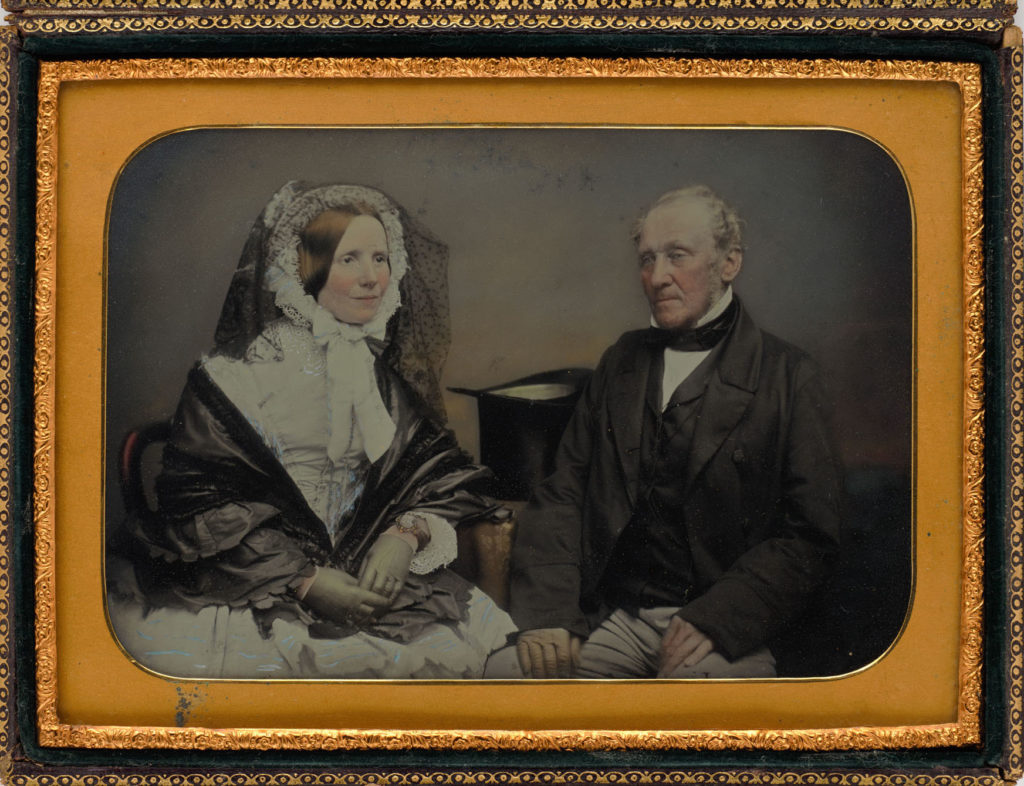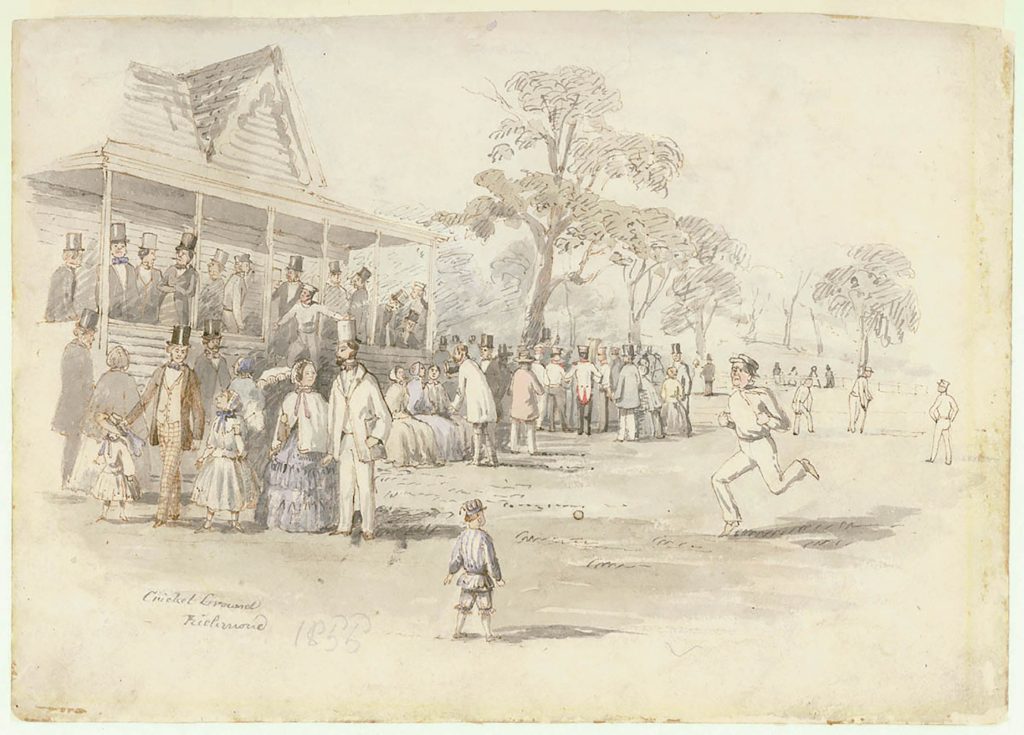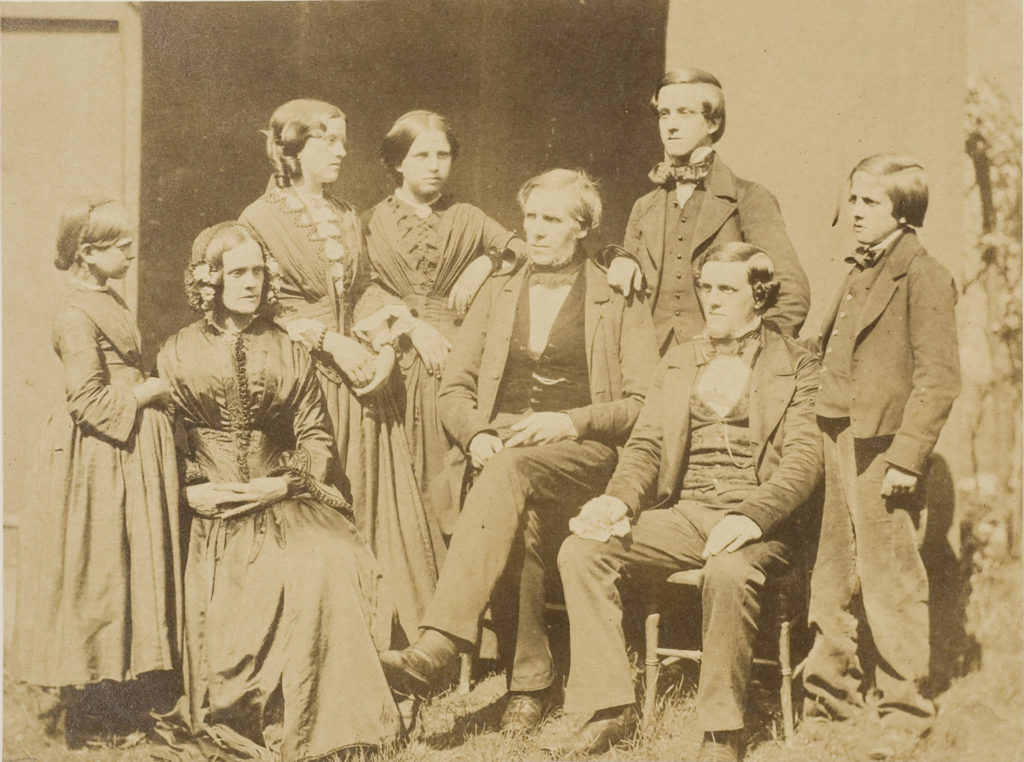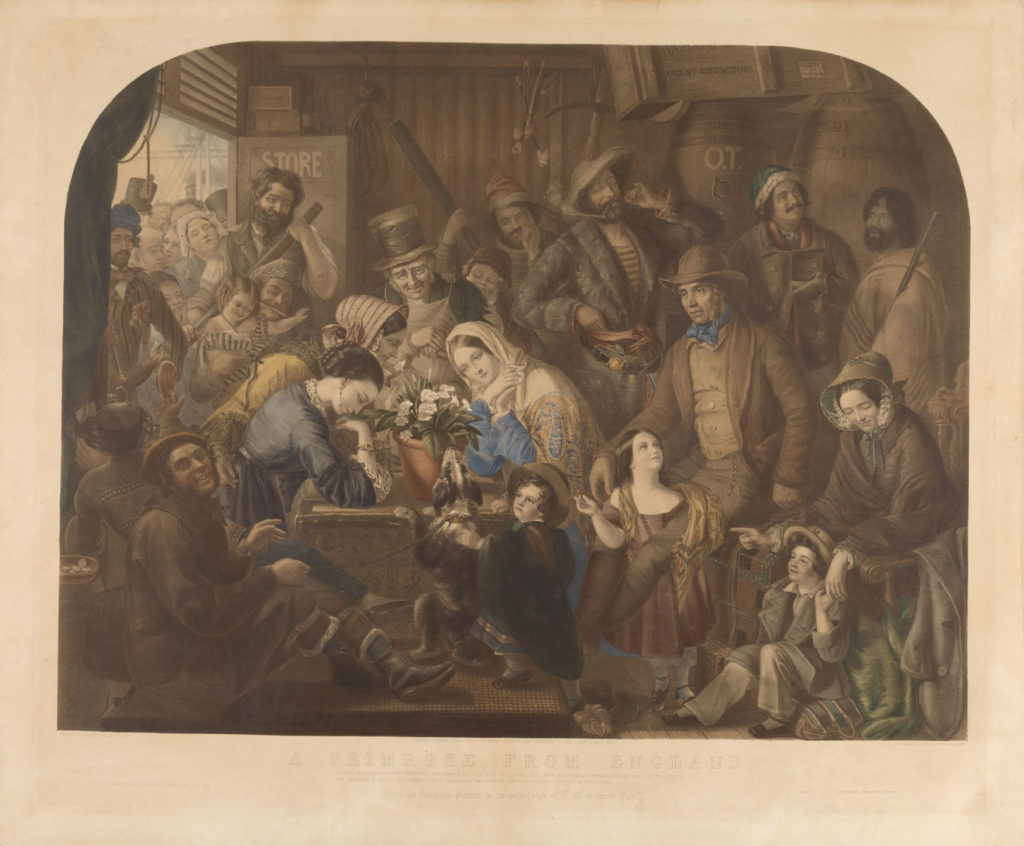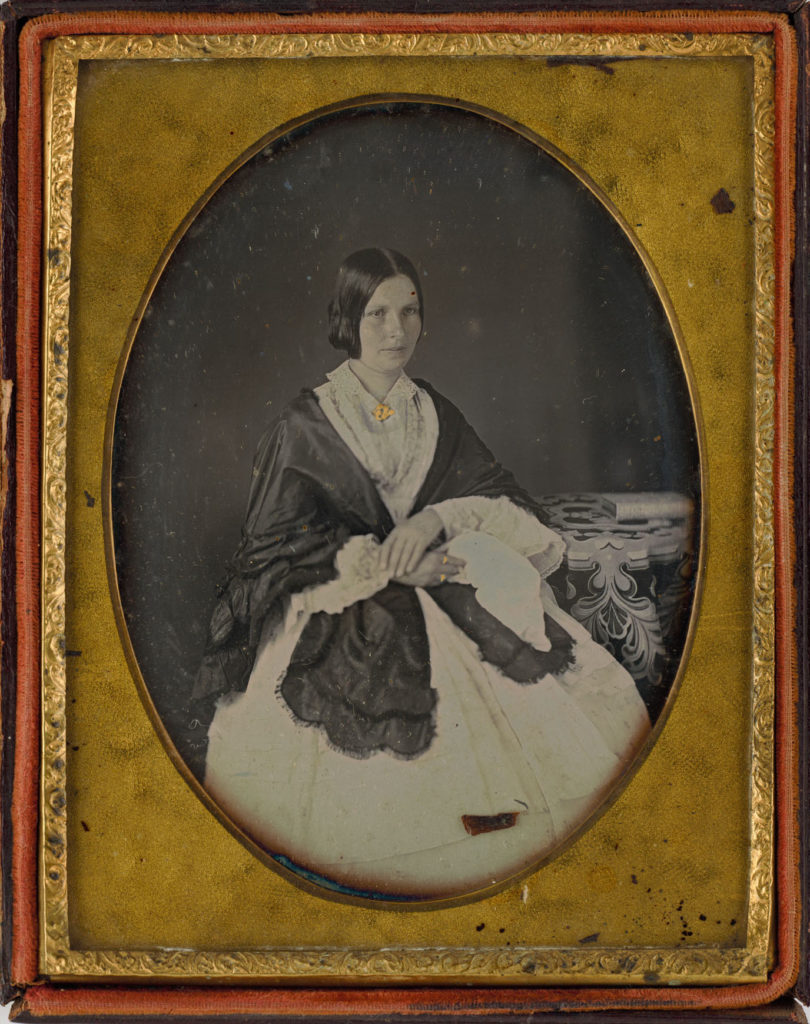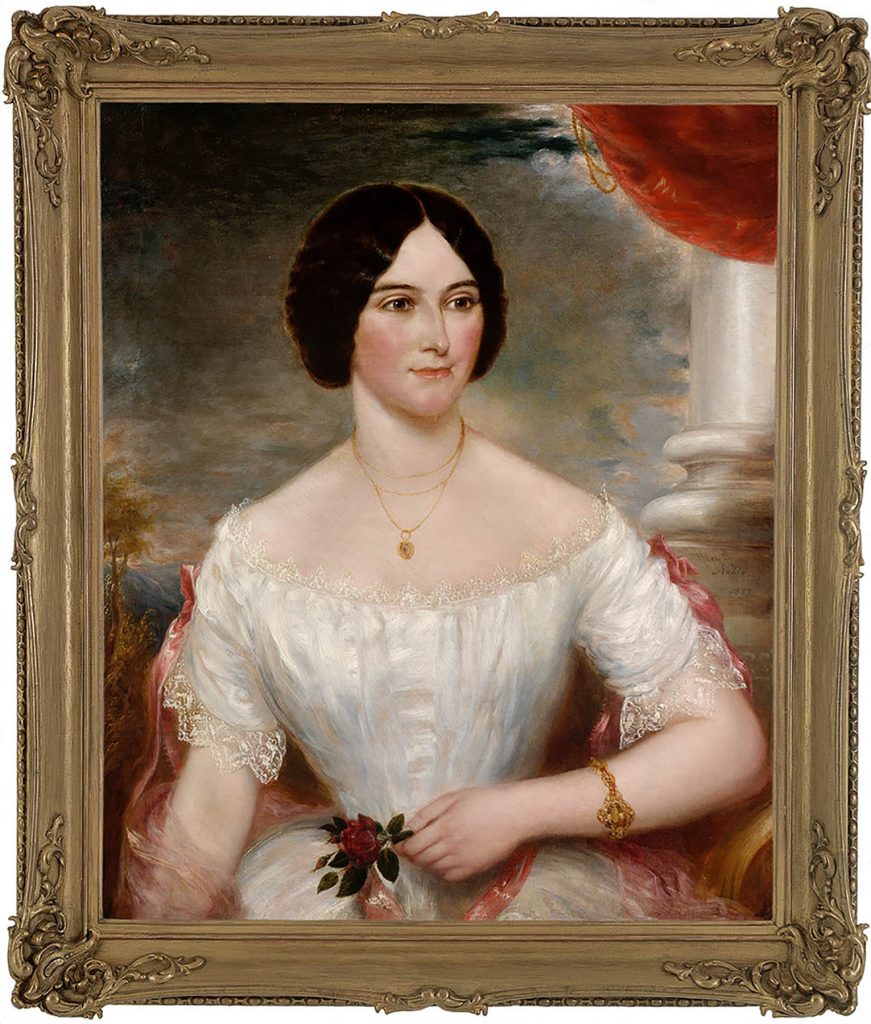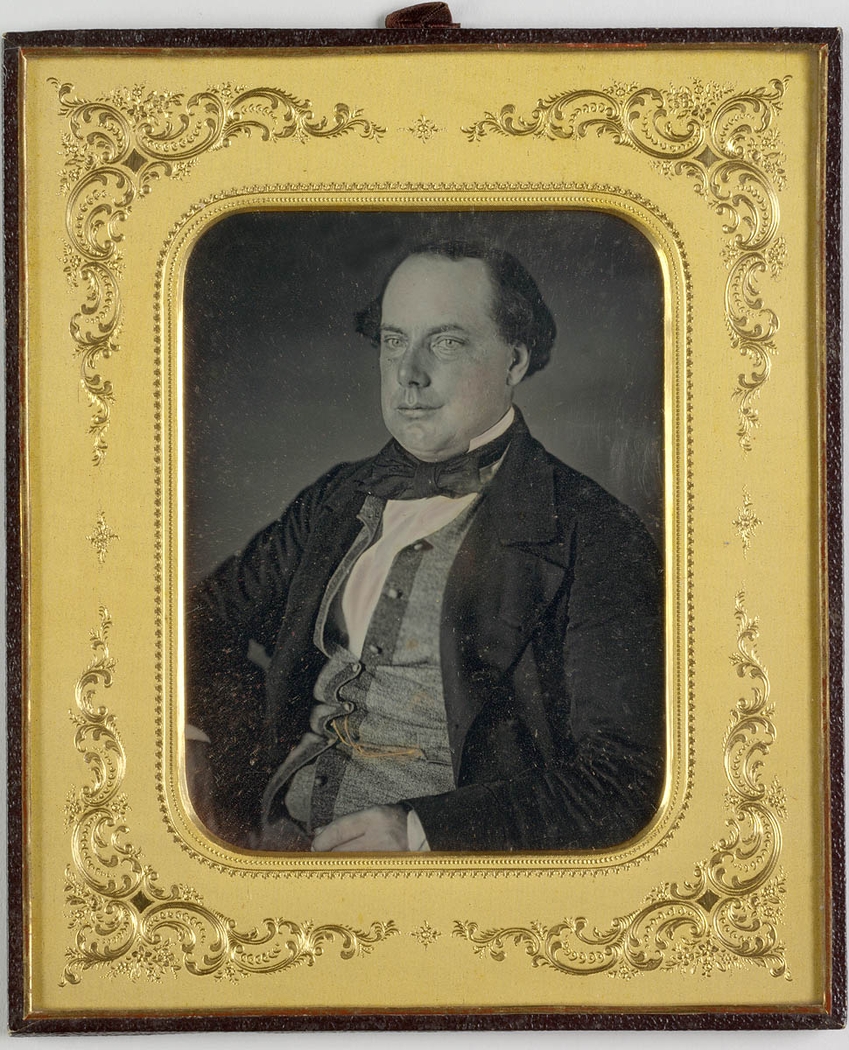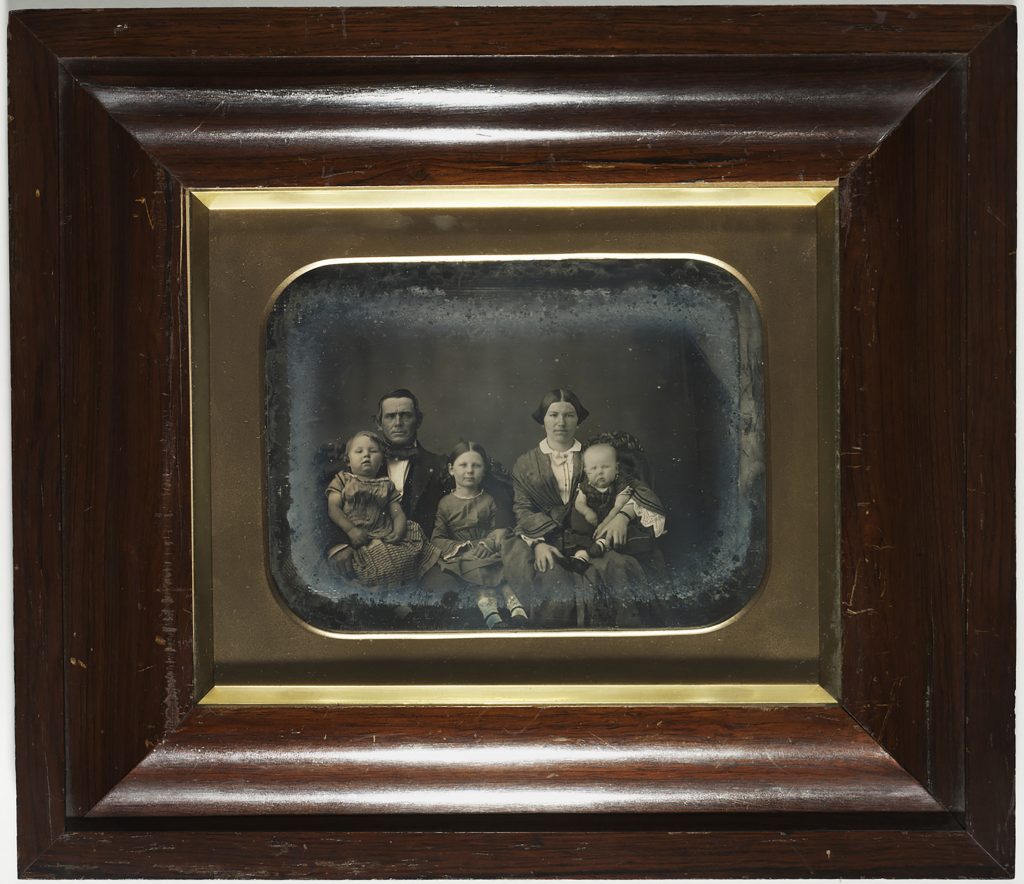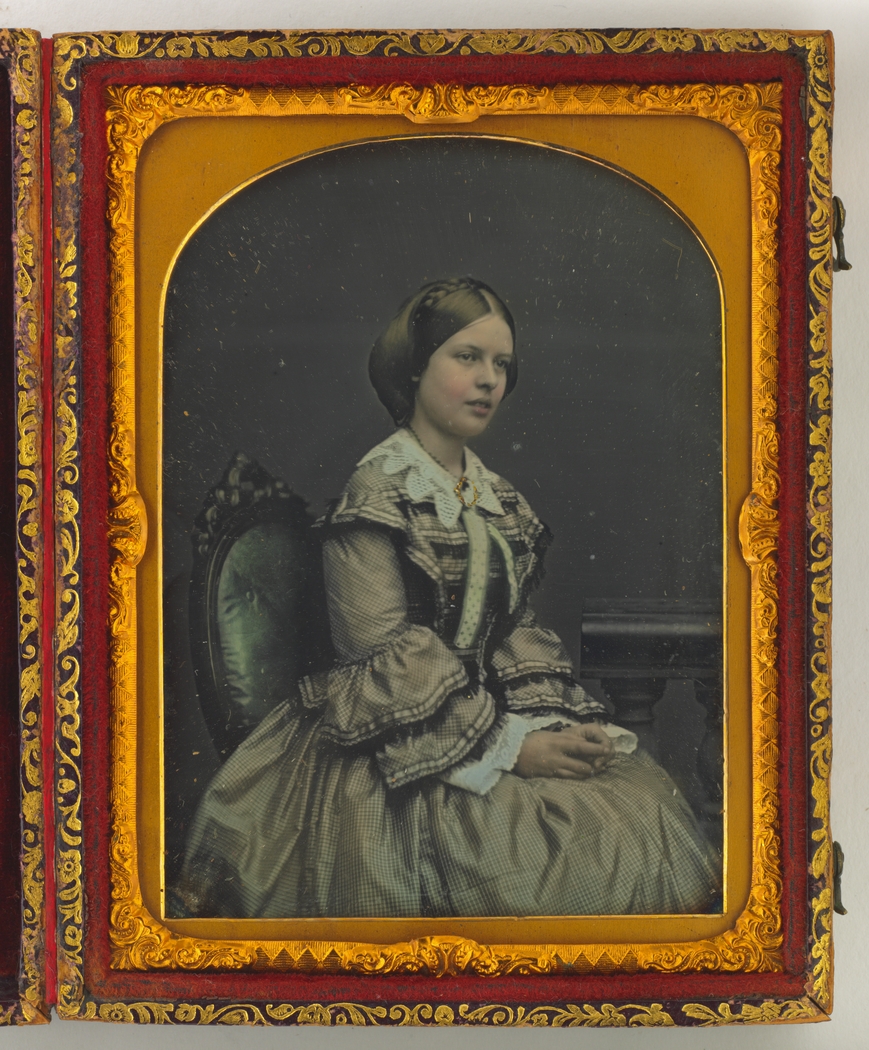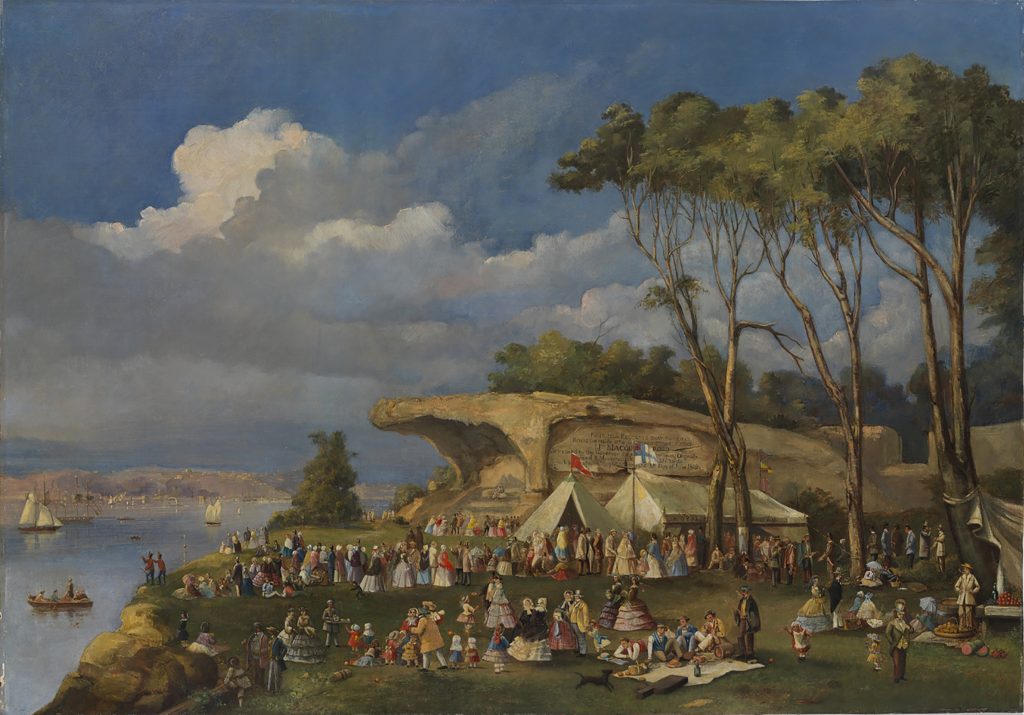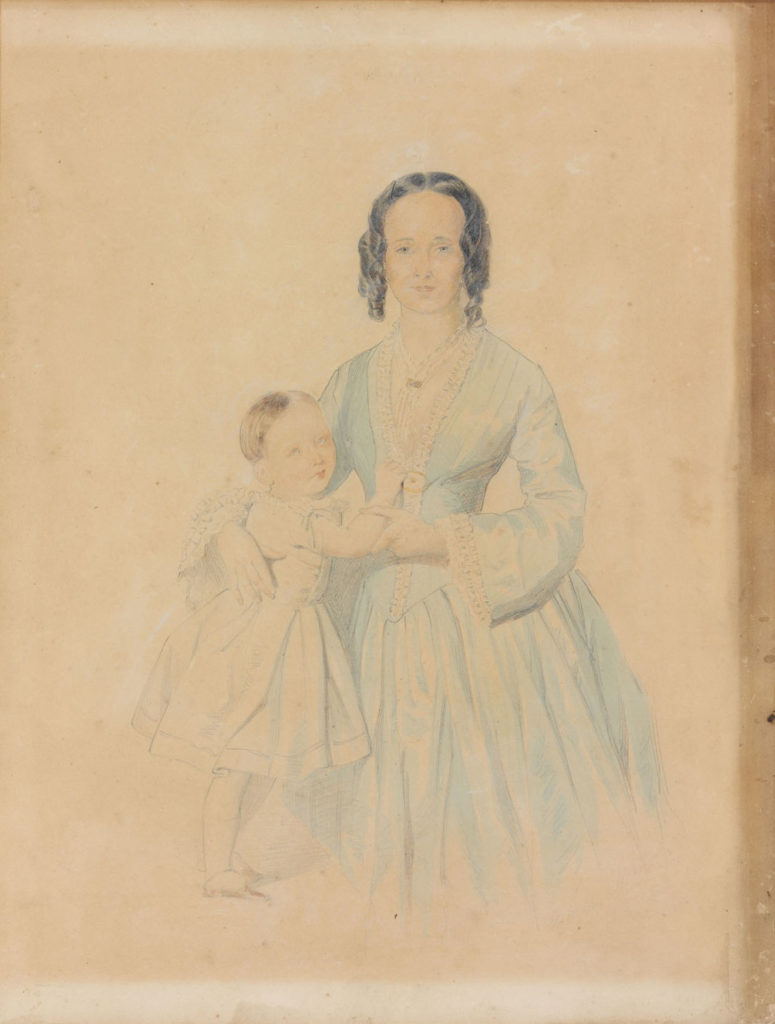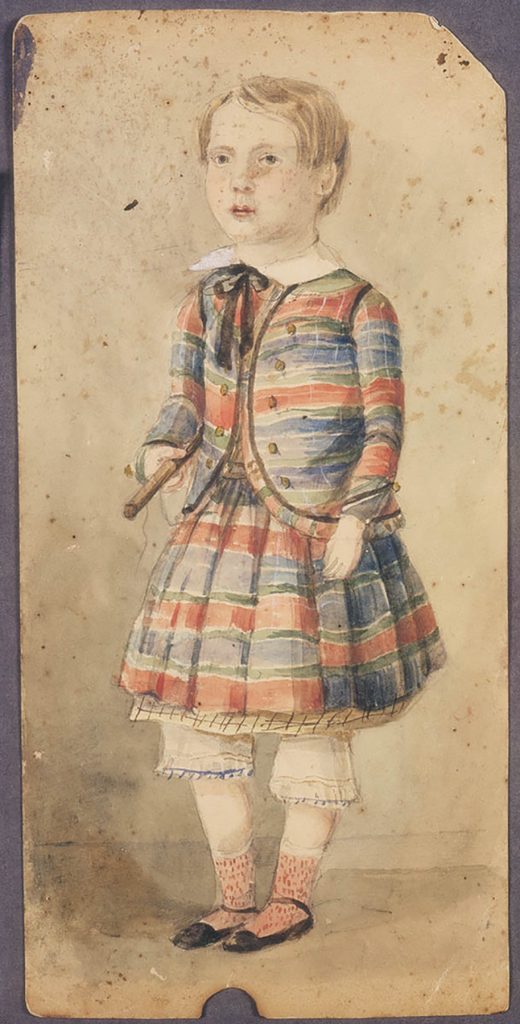What we see in this image
This delicately hand-tinted ambrotype portrait is highly unusual as the date and location of the photograph can be confirmed by the presence of a copy of the 1857 Sydney Post Office Directory, quite deliberately positioned to ensure its legibility, in the lap of the woman seated on the left identified as Amelia Dorcas Ormod, nee Troughton. For their front facing ¾ length group portrait the three female members of the Troughton family (thought to be sisters) wear very similar styles of day dress, with jacket-style bodices and full skirts. All the dresses have sloping shoulder lines and three-quarter length pagoda sleeves, trimmed at the elbow with ruched or fringed oversleeves and worn with ruffled and flared white undersleeves, with loose pleats (which may or may not conceal centre front fastenings) fanning up the corsage from the waist and spreading over the shoulders. Amelia, aged 22, wears the plainest gown with a white peter-pan style collar and a ribbon tie, and two rows of braid trimming the edges of her sleeves. Her sisters, [Mary] and Clara, standing to the right, wear dresses of light-coloured checked cotton and dark silk taffeta respectively, both with shirred panels at the waist, Clara’s silk gown with matching silk fringed trim on the edges of the sleeves. All three women wear their hair in the popular bandeau style of the mid-1850s, for which smooth front sections of hair have been wrapped over the ears and drawn back to the nape of the neck, the remainder arranged behind in a longer and deeper roll; the sheen of their hair suggests that it has probably been oiled. Perhaps to accommodate the tightness of the pose, their unornamented dome-shaped skirts are somewhat lacking in fullness, despite being finely ‘gauged’ (ie. cartridge pleated) at the waist, and would appear to be worn without the customary 4 or 5 layers of crinoline (ie. horsehair) petticoats necessary – before the advent of the sprung-steel cage crinoline in 1856 – to achieve the fashionable 1850s silhouette.
What we know about this image
The three women are believed to be the daughters of James (c.1809-1873) and Dorcas (c.1808-1880) Troughton of Parramatta. James Troughton may have been a minister. An inscription on the back of the framed portrait identifies the woman on the left of the group as Mrs Amelia Dorcas Ormrod, nee Troughton (1835-1914) with Mrs [Henry] Carr of Mudgee at the centre and Clara Troughton on the right. Though no wedding rings are visible in this image, Mrs [Henry] Carr, nee [Mary] Troughton, had married in 1855, and by 1858 Amelia Troughton (see MIN 99) was married to Sergeant William Ormrod (see MIN 103) who had served in the Crimean War (1853-1856), and died in 1878, he is buried in the graveyard of St Anne’s Church, Ryde.
Print page or save as a PDF
Hover on image to zoom in
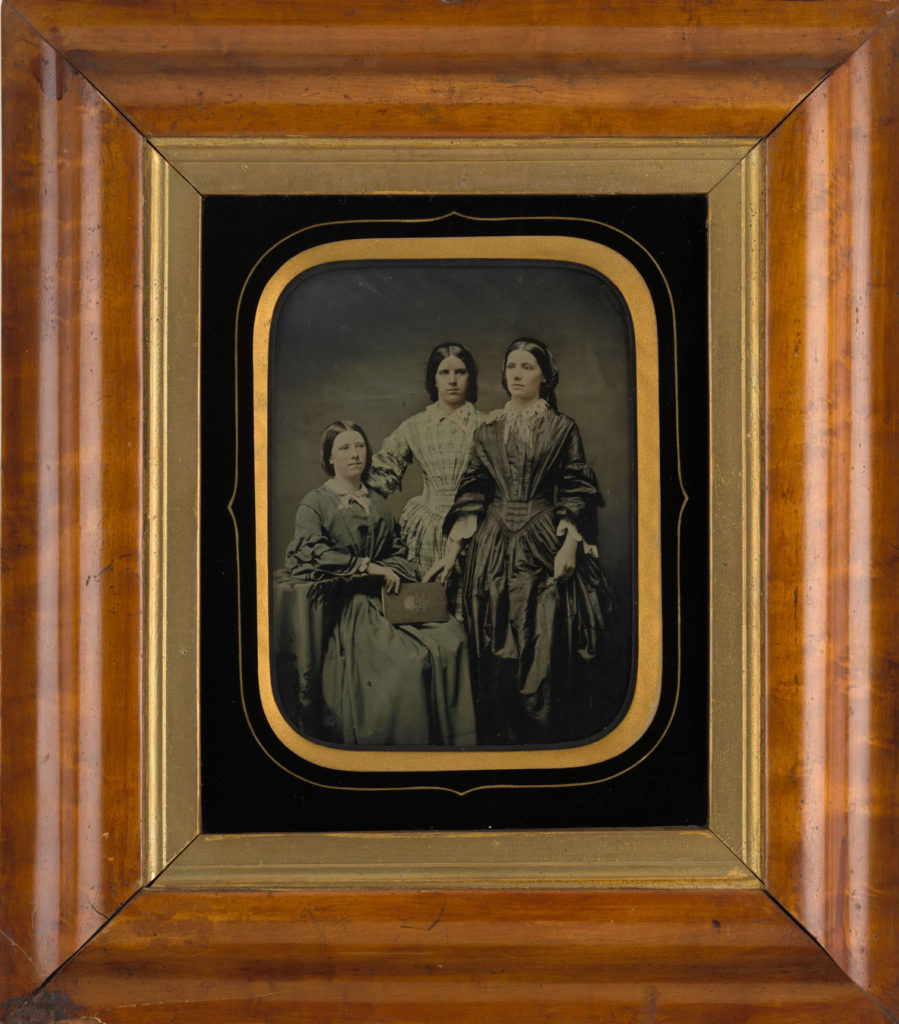
1857 – Troughton sisters: (l) Amelia Dorcas Ormrod, (c) Mrs [Mary] Carr, (r) Clara Troughton
Open in State Library of NSW catalogue
Download Image
| Creator |
| Glaister, Thomas fl.1854–1870 attrib. |
| Inscription |
| On reverse: |
| Medium |
| photograph |
| Background |
| N/A |
| Reference |
| N/A |
